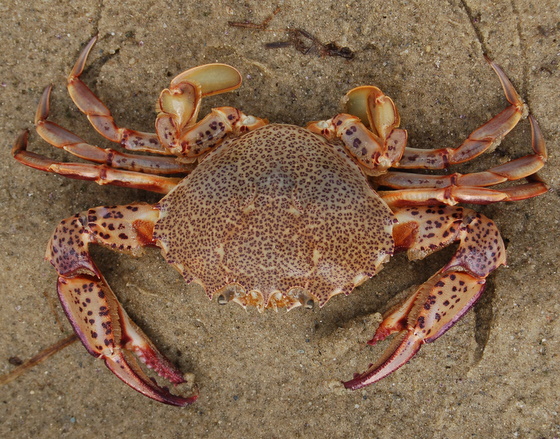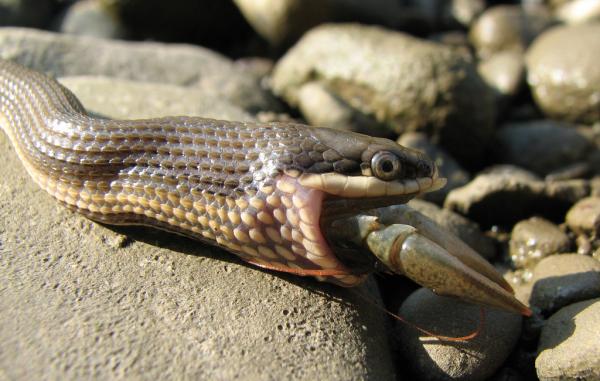Since snakes can't chew, in order to eat they swallow their food whole. This means finding prey small enough that they can stretch their open mouths around. But one snake, to the surprise of a veteran biologist and reptile expert, takes an entirely different approach to self-nourishment.
This one, which is indigenous to Malaysia and dines on soft-shelled crabs, rips its prey apart and then consumes it in bites. And using this unique approach, this snake can ingest crabs that are up to four times bigger than it could otherwise swallow whole.
"These crabs are huge! The legs alone were nearly as big as the snake's gape. But they can consume the crab by pulling it apart when it's soft and vulnerable," said University of Cincinnati biologist Bruce Jayne, who has co-authored more than 70 studies on snakes or lizards in peer-reviewed journals.
This fascinating snake that Jayne came across is called Gerarda prevostiana, but it's more commonly known as Gerard's water snake. And despite living alongside other snakes that eat their prey the conventional way, Gerarda prevostiana has learned to strike in fascinating fashion, when the soft-shelled crab is undergoing a physical change.
It appears Gerarda prevostiana gravitates to these crabs because they shed their shells, and the snake attacks during a brief, 20-minute period when the crab's harder shell is discarded and its body is softest.
 "This is a freshly molted crab," says Jayne, describing the 45-minute exoskeleton shift, which he observed using night-vision cameras. "It's slimy. They go from being soft and slimy to leathery and ultimately hard. So the snakes only have about a 20-minute window to eat the crab the way they really like them."
"This is a freshly molted crab," says Jayne, describing the 45-minute exoskeleton shift, which he observed using night-vision cameras. "It's slimy. They go from being soft and slimy to leathery and ultimately hard. So the snakes only have about a 20-minute window to eat the crab the way they really like them."
Jayne witnessed this when studying two other snakes that live nearby Gerarda prevostiana. They are Fordonia leucobalia, which chased down hard-shelled crabs, and Cantoria violacea that hunted snapping shrimp.
The study, titled "How big is too big? Using crustacean-eating snakes (Homalopsidae) to test how anatomy and behaviour affect prey size and feeding performance," was published last month in the Biological Journal of the Linnean Society.
Even with his vast experience in the field, Jayne continues to appreciate the subtle surprises in his research.
"That's one of the nice things about studying anatomy and behavior. You know the evolutionary relationships. You can find some counterintuitive patterns," Jayne said. "It appears that this specialty in feeding on soft-shelled crustaceans popped up after they were already feeding on hard-shelled crustaceans."




